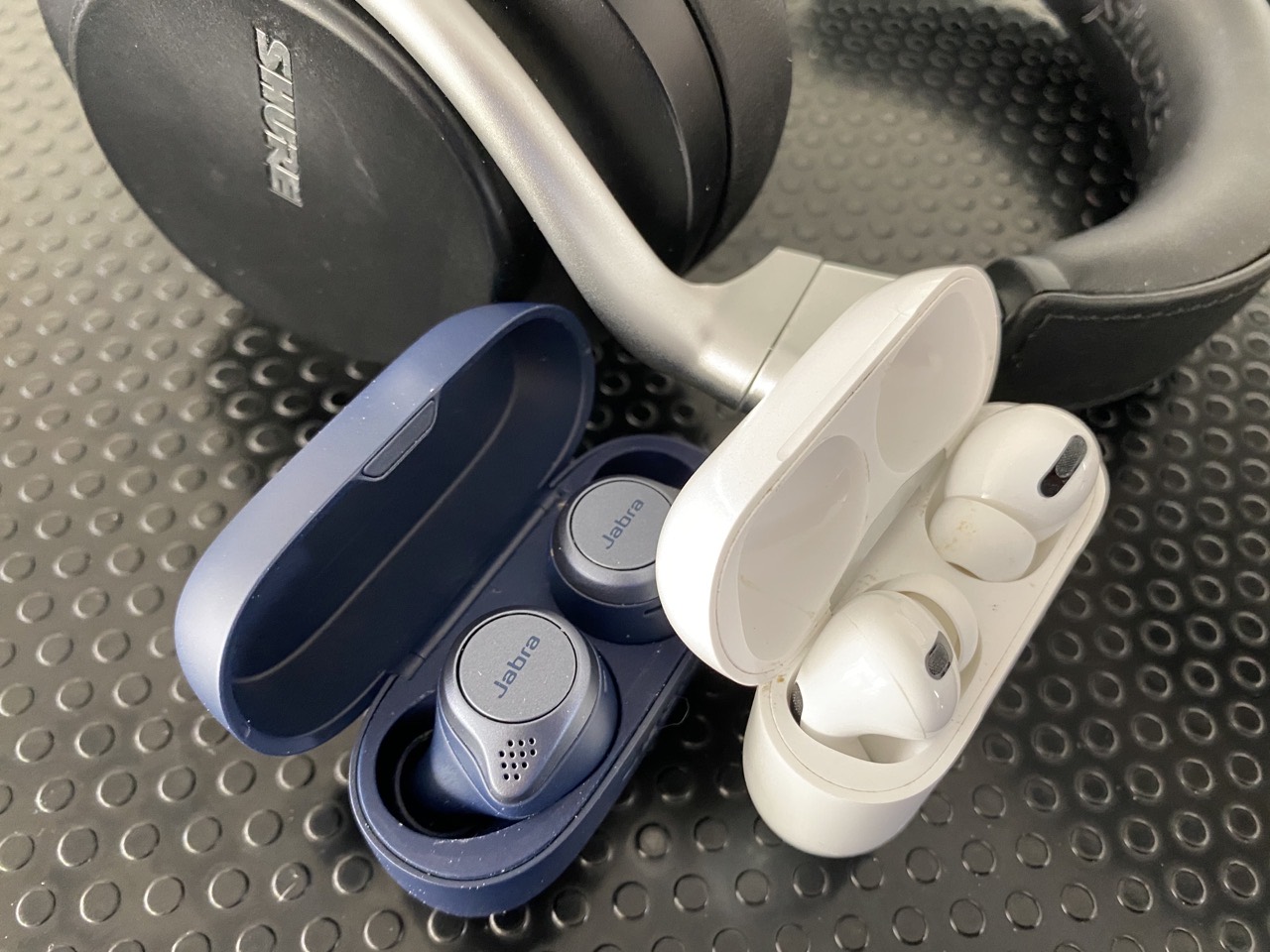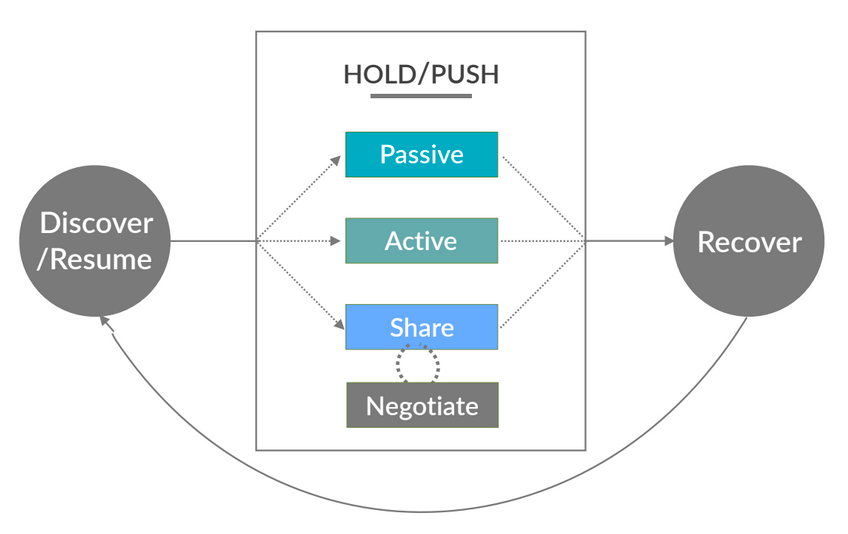Her experience with the dishwasher and the toaster changed her, though she couldn’t quite say how at first. Leaving the apartment the next day, she’d found herself eyeing up the elevator bank, looking at the fire-department override plate under the call screen, thinking about the fact that the tenants on the subsidized floors had to wait three times as long for an elevator because they were only eligible to ride in the cars that had rear-opening doors that exited into the back lobby with its poor-doors. Even those cars wouldn’t stop at her floor if they’d picked up one of the full-fare residents on the way, because heaven forfend those people should have to breathe the common air of the filthy commoners.
Salima had been overjoyed to get a spot in her building, the Dorchester Towers, because the waiting list for the subsidy units that the planning department required of the developer was years deep. She’d been in the country for a decade at that point, spending the first five years in a camp in Arizona where they’d watched one person after another die in the withering heat. When the State Department finally finished vetting her and let her out, a caseworker met her with a bag of clothes, a prepaid debit card, and the news that her parents had died while she was in the camp.
She absorbed the news silently and didn’t allow herself to display any outward sign of her agony. She had assumed that her parents had died, because they’d promised to meet her in Arizona within a month of her arrival, just as soon as her father could call in his old debts and pay for the papers and database fiddling that would get him on the plane and to the U.S. Immigration checkpoint where they could claim asylum. She’d been a teenager then, and now she was a young woman, with five years’ hard living in the camp behind her. She knew how to control her tears. She thanked the caseworker and asked what had become of their bodies.
“Lost at sea,” the woman said and donned a compassionate mask. “The ship and all its passengers. No survivors. The Italians scoured the area for weeks and found nothing. The wreck went straight to the bottom. Bad informatics, they said.” A ship was a computer that you put desperate people inside, and when the computer went bad, the ship was a tomb you put desperate people inside.
She nodded like she understood, though the sound of her blood in her ears was so loud she couldn’t hear herself think. The social worker said more things, and gave her some paperwork, which included a Greyhound ticket to Boston, where she had been found a shelter bed.
She read the itinerary through three times. She’d learned to read English in the camp, taught by a woman who’d been a linguistics professor before she was a refugee. She’d learned geography from the mandatory civics lessons she’d gone to every two weeks, watching videos about life in America that were notably short on survival tips for life in the part of America where they slept three-deep in bunk beds in a blazing desert, surrounded by drones and barbed wire. She’d learned where Boston was, though. Far.
“Boston?”
“Two days, seventeen hours,” the social worker said. “You’ll get to see all of America. It’s an incredible experience.” Her mask slipped for a moment and she looked very tired. Then she pasted her smile back on. “Get to the grocery store first, that’s my advice. You’ll want some real food to eat.”
Salima had got good at being bored over her five years in the camp, mastering a kind of waking doze where her mind simply went away, time scurrying past like roaches clinging to the baseboard, barely visible in the corner of her eye. But on the Greyhound bus, the skill failed her. Even after she found a window seat—twenty-two hours into the journey—she found her mind returning, again and again, to her parents, the ship, the deep fathoms of the Mediterranean. She had known that her parents were dead, but there was knowing, and there was knowing.
She debarked in Boston two days and seventeen hours later, noting as she did that the bus didn’t have a driver, something she’d missed, boarding and debarking by the rear doors. Another computer you put your body into. Given the wrong informatics, the Greyhound could have plunged off a cliff or smashed into oncoming traffic.
There’d been a charge port on the armrest, and she’d shared it with the seatmates who’d come and gone on her bus, but she made sure she had a full charge when she stepped off the bus, and it was good she did, as she used up almost all of her battery getting translations and directions in order to find the shelter she’d been assigned, which wasn’t in Boston, but in a suburb called Worcester, whose pronunciation evaded her for the next six months.
All her groceries were consumed, and everything she owned fit into a duffel bag whose strap broke as she was lugging it up a broken escalator while changing underground T trains on her way to Worcester. She’d spent half the funds on her debit card on food, and had eaten like a mouse, like a bird, like a scurrying cockroach. She had started with nearly nothing and now she had nothing.
The hardest part of finding the shelter was the fact that it was in a dead strip mall, eleven stores all refitted with bunks and showers and playrooms for kids, arranged along the back plane of an empty parking lot that was half a mile from the nearest bus stop. Salima walked past the mall three times, staring at her phone—whose battery was nearly flat again; it was so old it barely held a charge—before she figured out that this row of shops was her new home.
The reception was in an old pharmacy that had anchored the mall. It was unattended, a cavernous space walled off by a roll-down gate, with a row of touchscreens where the cash registers had sat. It smelled of piss and the floor was dirty, with that kind of ancient, ground-in grime you got in places where people trudged over and over.
Only one of the touchscreens was working, and it took a lot of trial and error before she figured out that she needed to tap about 1.5 centimeters south-southwest of the buttons she was hitting. Once she clocked this, things got faster. She switched the screen to Arabic, let the camera over it scan her retinas, and repeatedly pressed her fingers to the pad until the machine had read her. Once it had validated her, she had to tap through eight screens of things she was promising: that she wouldn’t drink or drug or steal; that she didn’t have any chronic or infectious diseases; that she did not support terrorism; that she understood that at this stage, she was not permitted to work for wages, but that also and paradoxically, she would be required to work in Worcester in order to pay back the people of the United States for the shelter bed she was about to be assigned.
She read the fine print. It was something she’d learned to do, early in the refugee process. Sometimes the immigration officers quizzed you on the things you’d just clicked through and if you couldn’t answer their questions correctly, they’d send you back to the back of the line, or reschedule your hearing for the next month, because you hadn’t fully appreciated the gravity of the agreement you were forging with the USA.
Then she found out which of the former stores she’d be living in, and was prompted to insert her debit card, which was topped up with credits she could exchange for food at specific stores that catered to people on benefits. As she tapped through more screens, entering her phone number, choosing times for medical checkups, she became aware of a low humming noise, growing closer. She turned around and saw a low trolley trundling through the aisles of the derelict pharmacy, with a cardboard banker’s box on it. It steered laboriously around corners, then moved to a gate set into the roll-down cage, which clunked open. The screen prompted her to retrieve the box, which contained linens, a towel, a couple six-packs of white cotton underwear, t-shirts, a box of tampons, and a toilet bag with shampoos, soaps, and deodorants. It was the most functional transaction she’d had in … years … and she wanted to kiss the stupid unlovely little robot.
She couldn’t carry her box and her duffel bag at the same time, and she didn’t want to let either out of her sight, so she staged them down the face of the strip mall, moving the box ten paces, setting it down and getting her duffel and carrying it ten paces past the box, then leapfrogging the box over the duffel. Her pile of papers from the kiosk included a map showing the location of her storefront, near the end (of course), so it was a long way. At the halfway mark, a woman came out of the store she’d just passed and regarded her with hands on hips, head cocked, a small smile on her face.
The woman was Somali—there’d been plenty in the camp—and no older than Salima, though she had a small child clinging to her legs, gender unknown. She wore overalls and a Boston University sweatshirt and had her hair in a kerchief, and for all that, she looked somehow stylish. Later, Salima would learn that the woman—whose name was Nadifa—came from a long line of seamstresses and would unpick the seams on any piece of clothing that fell into her hands and re-tailor them for her measurements.
“You are new?”
“I am Salima. I’m new.”
The woman cocked her head the other way. “Where are you staying? Show me.” She walked to Salima and held out her hand for the map. Salima showed it to her and she chupped her teeth. “That’s no good, that one has bad heat and the toilet never stops running. Gah—here, let us fix it.”
Without asking, the woman hoisted her box, and led her back to the office, Salima trailing after her alongside the little child, who kept sneaking her looks. The woman knew which screen worked and could land her finger at the exact south-southwestern offset needed to hit the buttons. Her fingers flew over the screen and then she had Salima stand before the retina monitor and put her fingers on the scanner again, and new paper emerged in the kiosk’s out tray.
“Much better,” the woman said. Salima felt confused and a little anxious. Had this woman just moved her in with her family? Was she to be a babysitter for the child who was staring at her again?
But she didn’t need to worry. Single women stayed in one of three units, and families in two more. Salima’s new home—thanks to the woman, who finally introduced herself—had once been a nail salon, and its storeroom still had a few remnants from those days, but it was now hung with heavy, sound-absorbing blankets made out of some kind of synthetic fiber that turned out to be surprisingly good at shedding dirt and dampening sound. The woman and her kid left her there, and she pulled the fabric corners shut and tabbed them together and spent a moment in the ringing silence of the tiny curtained roomlet, a place that would truly be hers, shared with no one, for some indeterminate time.
Later, she’d discover all the ways that the other shelter-dwellers had decorated their little spaces, which most of them called cells, with heavy irony, because every one of them had spent months or years in literal cells, the kinds with concrete walls and iron bars. She’d decorate her own room, and Nadifa’s children would come to poke their heads in without warning and demand stories or someone to play a game with or ideas for pictures to draw. She wasn’t exactly roped into being a babysitter, but she wasn’t exactly not roped into it, either, and she liked Nadifa’s kids, who were just as bold and fearless as their mother, who was also a lot of fun, especially when she found a bottle of wine and sent the kids out to play in the common room, and they’d perch at opposite ends of Salima’s narrow bunk, telling lies about men, and sometimes the odd truth about their lives before the shelter would slip in, and there’d be a tear or two, but that was all right, too.
Nadifa already had her work papers and she showed Salima how to get papers of her own, which took months of patient prodding at the one working kiosk to get it to emit pieces of paper that she’d have to bring to government offices and feed into other kiosks, sneaking the trips in between her work details. The irony of being too busy working to get a work permit did not escape her, and oh, how she laughed at the irony as she scrubbed graffiti and picked up trash in the parks and cleaned city buses in the great bus-barns in places even more out of the way than her Worcester strip mall.
Getting her work papers wasn’t the same as getting a job, but Salima was smart and she’d spent her years in the camp pursuing different qualifications by online course—hair braiding and bookkeeping, virus removal and cat grooming—and she felt sure there’d be something she could do. She searched the job boards with Nadifa’s help, enrolled with temp agencies, submitting to their humiliating background checks, which included giving them access to her social media and email history, an invasion that was only made worse when she was later quizzed on the messages she’d saved from her parents, videos and picture-messages sent after they’d been separated, but before they’d both died.
Work trickled in, a few hours here and there, shifts dwarfed by the long commutes on the bus to and from the jobs, but she cherished hope that taking these shitty jobs would build her rep with the agencies that were sending her out, that she’d pay her dues and start getting real shifts, for real money. She bought a couple external batteries for her ailing phone so that she could work on the bus rides. She and Nadifa had divided up the entirety of New England and every day they ran hundreds of searches to look for new high-rise approvals that came with subsidized apartments and then made a note of the day that the waiting list for each would open. They knew the chances of either one of them getting accepted were vanishingly small, and if they were both accepted, it was pretty much impossible that they’d end up in a place together.
Which is why the Dorchester Towers were such a miracle. It was bitter December and the shelter hadn’t ever gotten its promised shipment of winter coats, so everyone was making do with multiple layers of sweaters and tees, which didn’t read as “professional” and had cost Salima a very good weeklong bookkeeping job for a think tank that was closing its quarterly books. She’d been worried sick about losing the job and, worse, getting a black mark with the temp agency, which had got her several other great bookkeeping jobs that had fattened her tiny savings account more than a dozen cleaning jobs.
Rattling around the strip mall with the other denizens trapped by the weather and the inadequate clothes, she pondered raiding her savings for a coat, trying to figure out how much work she’d have to lose before it would be a break-even proposition and estimating the probability that the long-delayed winter-coat shipment would finally arrive before too much work was lost. Her phone let her know she had a government message—the kind that she would have to retrieve from the kiosk in the shelter office—so she put on three sweaters and stuffed her hands into three thicknesses of socks and fought the gale-force winds to the office.
Standing in a puddle of her own meltwater, she logged into a kiosk—they’d fixed them all, including the one that sort of worked, and now all of them were equally unreliable and prone to falling into an endless reboot cycle—and retrieved the message. She was just absorbing the impossibly good news when Nadifa staggered in from the cold, carrying her smallest one close to her for body heat.
“Does that one work?” She pointed at Salima’s kiosk and Salima smiled to herself as she wiped the screen and stepped away from it.
“It works!” Her joy was audible in her voice, and Nadifa gave her a funny look. Salima stifled her grin. She’d tell Nadifa when—
“Oh my God.” Nadifa was just staring at the screen, jaw on her chest. Salima peeked and laughed aloud.
“Me too, me too!”
The message was that Dorchester Towers had approved Nadifa’s residency, with a two-room flat on the forty-second story that would be ready to move into in eighteen months, assuming no construction delays. The rent was income-indexed, meaning that Nadifa and her kids would be able to afford to live there no matter what happened to them in the future. Nadifa was sometimes loud and pushy, but she was never squeaky, so it amused Salima quite a lot when Nadifa threw her hands into the air and bounced up and down on her toes, making excited noises so high-pitched they’d have deafened a dolphin.
She didn’t even stop bouncing when she hugged Salima, pulling her along as she jumped up and down, laughing with delight, and Salima laughed even harder, because of what she knew.
She logged Nadifa out of the kiosk and logged herself in and quickly tapped her way into her official government mailbox, and simply pointed wordlessly at the screen until Nadifa bent and read it. Her jaw dropped even further.
“You’re on the thirty-fifth floor! That’s only seven floors below us! We can take the stairs to each other’s places!” Nadifa’s smallest child, confused by all the shouting and bouncing, chose that moment to set up a wail, and so Nadifa pulled him out of his sling and twirled him around over her head. “We’re getting a place, a place of our own! And Auntie Salima will be there, too! We’ll have a kitchen, we’ll have bedrooms, we’ll have—” She broke off and cradled the boy under one arm, used her free hand to grab Salima and shake her by the shoulder. “We’ll have bathrooms. Our own bathrooms! Our own bathtubs! Our own toilets!”
“Our own toilets!” Salima shouted, and the little one said something that was almost toilets and that set them both to laughing like drains, laughing until tears streamed down their faces, and the kid laughed with them.
The coats arrived after dinner that night, too.
Salima and Nadifa clubbed together to rent a van the day they moved out, and they filled it to the ceiling with the detritus of Nadifa’s years and Salima’s months at the shelter—kids’ toys, clothes, shampoo bottles with enough left inside for three more careful washes, drawings, picture books, scrap paper for drawing and paper dolls painstakingly cut out of old printouts from the kiosk. The car inched its way through the Boston traffic, which they could only glimpse intermittently through the tiny bits of windshield that weren’t covered in shopping bags full of possessions.
The van pulled into Dorchester Towers’ back alley two hours later. It was a hot June day and the kids had needed two toilet breaks and several water breaks, which had blown up their plans to beat rush hour traffic, landing them squarely within it. But the two women were stoic. They had been on journeys that were much, much longer and far, far more difficult.
The poor-doors for Dorchester Towers weren’t finished yet, and so they had to go through a temporary plywood tunnel to enter the building. The lobby was in the same condition as the doors—raw drywall, open electrical receptacles, rough concrete floor with troughs cast into it for conduit. They lugged their things into the lobby in stages, leaving Nadifa’s eldest to stand guard and watch the kids as they went back and forth to the van, trying to get everything out before the sixty-minute mark, when they’d be billed for another hour’s rental. They squeaked in.
There in the lobby, sweating and humid, they met the Dorchester Towers elevators. The touchscreen asked you for your floor, then tracked the passage of the cars up and down the shafts. Cars would touch down in the lobby and they’d hear the doors on the other side sigh open and shut, but the doors facing them never opened.
They debated what to do. Eventually, they decided that the doors on this side must not be working at all, that it was yet another thing that had to be completed, along with the lobby and the doors and please god, air conditioning.
Kids, belongings, themselves—somehow they got them out of the doors again, down the alley and around the building’s circumference to its lobby doors, which, they couldn’t help but notice, were finished, chromed, shined, smudge-free, and guarded.
The guard on the other side of the door buzzed the intercom when they tried the handle. He was white and wearing a semi-cop outfit, some kind of private security, which was unusual because that was the kind of job you saw brown people in, most of the time. They noticed this, too.
“Yes?”
“We live here, we’re moving in today. On the…” Salima waved down the road. “On the other side? But the elevators aren’t working there yet. We can take the stairs, after we move in, but she’s on the forty-second floor, and I’m on the thirty-fifth, and we have all this—” The pile of bags and clothes and drawings and children and themselves, all so disreputable, especially contrasted against the shining chrome, the unsmudged glass, which now had two of Nadifa’s kids’ faces and hands smearing slowly across it. Oops.
The security guard tapped his screen. “Elevators are working.”
“Not on that side. The elevators came down, but the doors didn’t open.”
“Step aside please.” He said it so sharply that even Nadifa’s kids snapped to attention. There were some people trying to get in, pressing their thumbs to a matte place on the doorframe that didn’t smudge. The doors gasped open and let out a blessed gust of air conditioning that almost brought them to their knees. The beaded sweat on their backs and legs and faces and scalps spilled as much of their heat as it could in the brief wind. Then the fine people were through the door, not having looked once at them. They were preppy, a look Salima had come to understand since moving to this city of colleges and universities, with floppy blond hair and carefully scuffed tennis outfits and sweaty, shining faces. The security guard greeted them and chatted with them, words inaudible through the closed doors. They were amiable enough, and waved good-bye as they stepped into the elevator. As the doors closed, Salima saw the doors on the opposite side, the doors that opened into that other lobby.
The security guard gave them an irritated look and shook his head like he couldn’t believe they were still hanging around, blocking his doorway. “Your entrance is around back.”
“The elevators don’t work,” Salima reminded him. “We waited and waited—”
“The elevators work. They just give priority to the market-rent side. You’ll get an elevator when none of these folks need one.”
Salima grasped the system and its logic in an instant. The only reason she’d been able to rent in this building was that the developer had to promise that they’d make some low-income housing available in exchange for permission to build fifty stories instead of the thirty that the other buildings in the neighborhood rose to. There was a lot of this sort of thing, and she knew that there were rules about the low-income units, what the landlords had to provide and what she was forbidden from doing.
But now she saw an important truth: even the pettiest amenity would be spitefully denied to the subsidy apartments unless the landlord was forced by law to provide it. She had spent enough time as Auntie Salima, helping to raise Nadifa’s three kids, to recognize the logic of a mulish child who wanted to make their displeasure known.
“Come on,” she said, as she picked up a double armload of bags and slogged back around the building to the poor-door.


















 iPhone:
iPhone: 















































